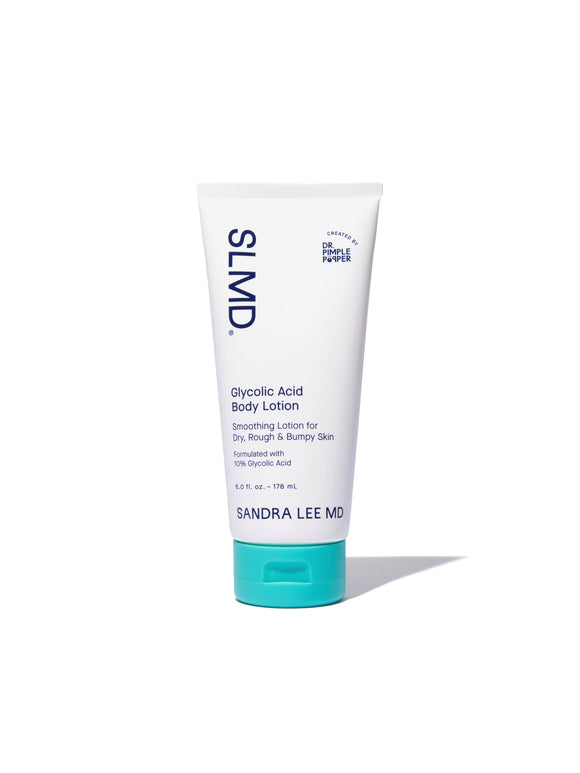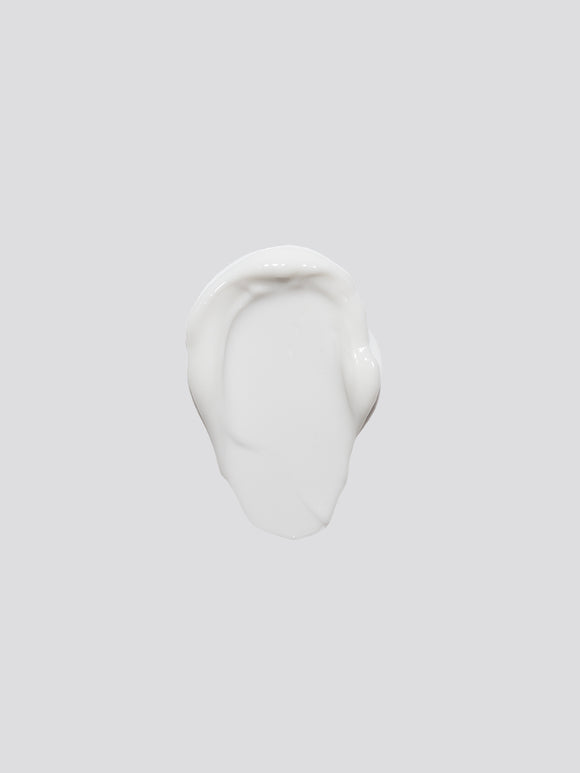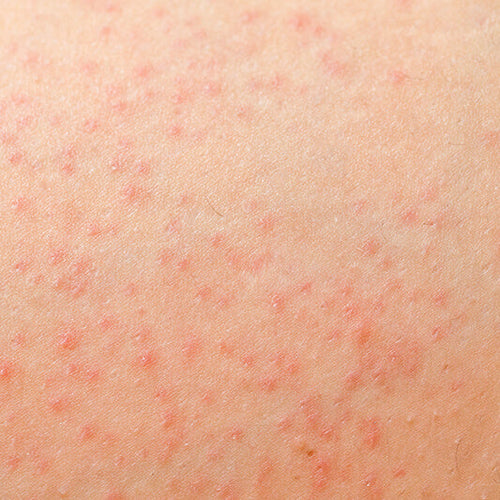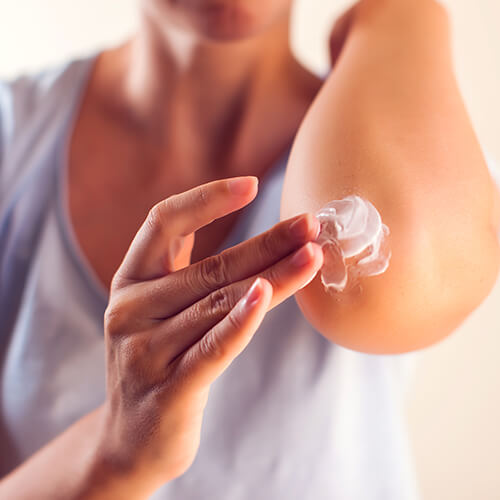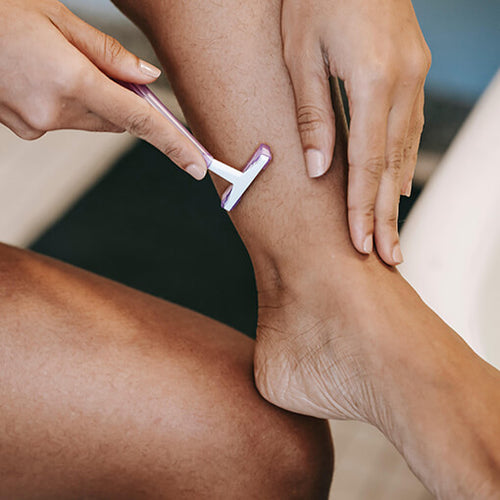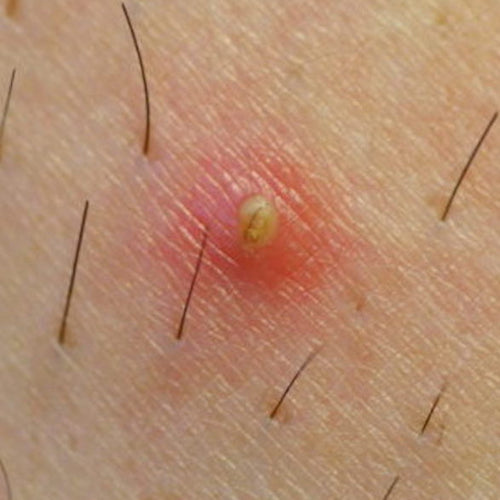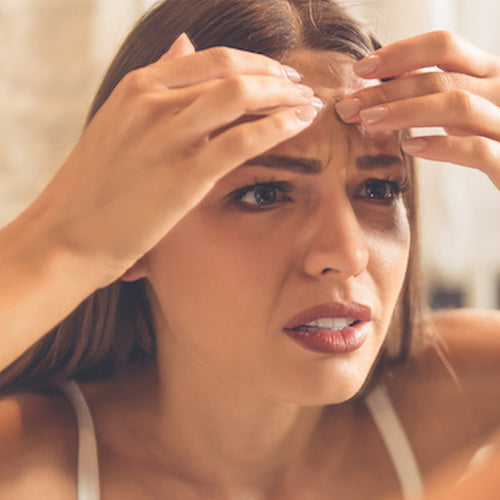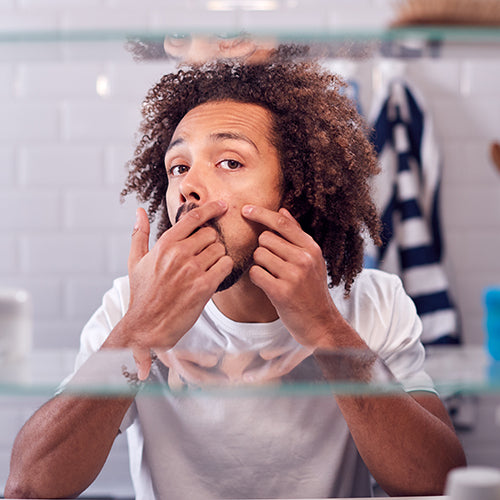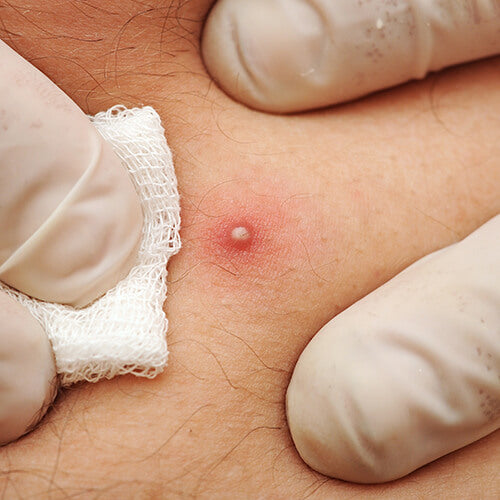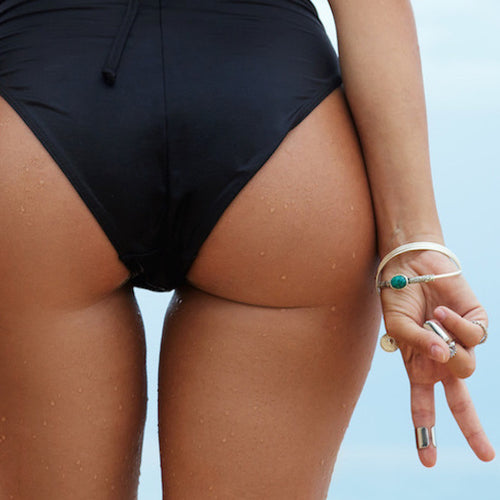
How to Treat and Prevent Razor Burn & Shaving Bumps
Dr. Pimple Popper's answering all your *burning* questions about shaving.Published:
4 minute read
We’ve all dealt with the consequences of a hasty shave: that painful redness and those rough, red bumps that pop up just in time for beach day or tank top weather. Razor burn and razor bumps are not-so-subtle reminders that shaving can be hazardous to your (skin) health. Think about it: scraping a razor blade along your skin’s surface, you’re practically asking for any number of potential problems to spring up.
Fortunately, there are ways to treat and prevent razor burn and razor bumps. With the help of SLMD Skincare founder Sandra Lee, MD (aka Dr. Pimple Popper), we’ll tell you how.
Article Quick Links
What causes a painful shave?
Essentially, shaving is an extreme form of exfoliation that can damage the skin barrier. If it’s damaged, our skin can become more vulnerable to things like dehydration, UV radiation, and trauma. Razor burn and razor bumps are two of the most common signs of skin trauma that’s caused by shaving.
Even though they’re often used interchangeably, razor burn and razor bumps aren’t actually the same thing — which means we need to treat them differently. Here’s a breakdown.
What is razor burn?
This is the redness, pain and itching that occurs within an hour or two after shaving. It’s a close cousin of those raw, red strawberries you may have gotten as a kid after sliding across the carpet.
According to Dr. Lee, razor burn is technically known as irritant contact dermatitis — which means it’s a result of the skin being damaged by some chemical or physical agent. In the case of shaving, it can be both: chemical irritation from shaving cream, and physical irritation from the razor itself.
People with dry or sensitive skin are particularly susceptible to razor burn, but certain factors can bring it on, like:
- Using an old razor
- Shaving in a hurry
- Shaving in the wrong direction
- Dry shaving
How do you treat razor burn?
Though it typically resolves on its own within a couple of days, there are ways to relieve the discomfort of razor burn, including:
- Apply a cool compress
- Use aloe vera
- Moisturize
- Take a shave break
Of course, the best way to handle razor burn is to avoid getting it in the first place. Dr. Lee says there are simple measures you can take to prevent razor burn from happening:
- Moisturize regularly
- Use a sharp blade
- Change razor frequently
- Wet skin thoroughly
- Use plenty of shaving cream
Try: SLMD Glycolic Acid Body Lotion, an exfoliating lotion with soothing aloe vera and hydrating glycerin to smooth and soften skin.
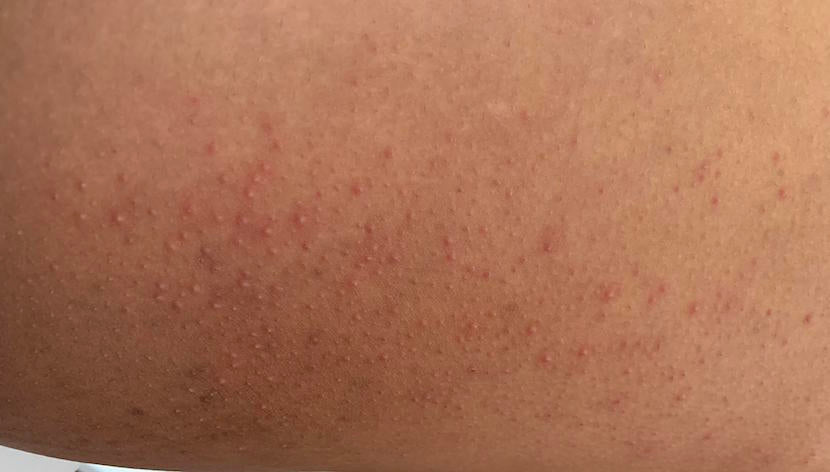
What are razor bumps?
Basically, common razor bumps (aka shaving bumps) are ingrown hairs. Dr. Lee says dermatologists call it pseudofolliculitis barbae, which is a type of folliculitis (aka hair follicle inflammation). These small abscesses develop when hair begins to grow back, but becomes trapped under the skin — triggering an inflammatory response.
Razor bumps can look a lot like acne pimples, but it’s usually easy to tell the difference based on whether or not you’ve recently shaved the area.
Much like razor burn, there are circumstances that make developing razor bumps more likely:
- Having curly or coarse hair
- Pulling skin while shaving
- Shaving against the grain
- Using a dull blade
How do you treat razor bumps?
Proper shaving technique — see our razor burn prevention tips above — will go a long way toward avoiding ingrown hairs. According to Dr. Lee, taking care of your skin both before and after you shave can also reduce your chances of developing shaving bumps.
Try: SLMD Body Smoothing System to exfoliate, soothe and moisturize skin.
Dr. Pimple Popper’s tips for treating razor bumps
Exfoliate regularly
Removing dead cells from the skin’s surface will reduce the likelihood of your pores becoming clogged and trapping the growing hair. For the body, Dr. Lee recommends a combination chemical and physical exfoliant, like her SLMD Glycolic Acid Body Scrub.
Use a sharp blade
If you’ve been using the same razor and blade for six months, not only are you going to get a lame shave, you’re also more likely to cause irritation. That’s because bacteria, rust and mold can build up on the blade as it sits in your moist shower or tub (ew).
Lubricate the skin
Make sure you’re wetting your skin before you shave and applying a shaving aid (like cream, foam or gel). This helps the razor blade to glide smoothly over the skin. If you aren’t a fan of shaving in the shower (or you’re in a hurry before a night out!) hold a wet washcloth on the area for a minute before coating with shaving cream.
Shave with the grain
Try using your razor in the same direction that your hair grows. It seems counterintuitive, but If you shave against the grain, you pull the hair backwards, which can distort its natural trajectory — angling it back under the skin instead of toward the skin’s surface.
Moisturize often
Post-shave care is equally important. Make sure you’re applying a moisturizer that contains both chemical exfoliants and hydrating ingredients. This helps slough off dead skin and protects the skin barrier. Dr. Lee recommends SLMD Glycolic Acid Body Lotion.
Spot treat
If you tend to get razor burn in the same place — and you’re following proper shaving procedures — there might be other contributing factors, like sweating or chafing. Dr. Lee suggests using more concentrated treatments on these areas can help. SLMD AHA/BHA Swipes contain a combination of skincare acids to exfoliate and penetrate pores, which can help minimize razor bumps. BP Acne Spot Treatment will also treat redness and inflammation to speed the healing process.

Dr. Lee's Last Word
I get asked about razor burn and shaving bumps all the time, and the good news is that there are ways to treat and prevent it. Prep your skin, change your blades, don’t dry shave — and make sure you exfoliate and moisturize regularly. If it doesn’t clear up, it might not be from shaving — so see your dermatologist.





